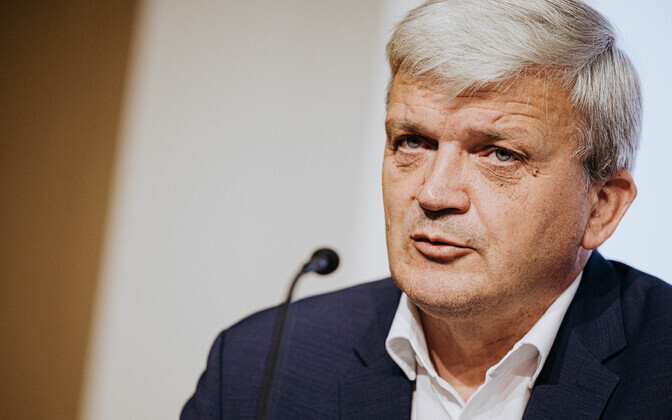According to a recent study, Estonia’s economic situation worsened in the third quarter. For economic growth to occur, domestic demand would need to improve significantly. However, this is unlikely if more and more money is taken out of the economy through taxes, said Peeter Raudsepp, director of the Estonian Institute of Economic Research.
Raudsepp told ERR that the Estonian Institute of Economic Research’s third-quarter study reveals seven key findings.
“Firstly, the assessment of the current economic situation has worsened. This means that not only has the situation slightly deteriorated, but the forecast for a positive outlook has also declined. Secondly, consumer confidence has dropped again, and thirdly, the economic climate has worsened,” he listed.
Additionally, economic confidence and sentiment indicators remain in the red, as they have for quite some time. Price increases are anticipated across nearly all business sectors, households’ economic situations have worsened slightly and trust in the government’s economic policies has also declined again.
“Today, we can say that this distrust has reached a record level,” Raudsepp noted.
Raudsepp added that multiple factors are behind this. Entrepreneurs have pointed out that the government’s economic policies are neither credible, comprehensible nor transparent.
According to Raudsepp, price increases are occurring at a slower pace than before, and we should not see the sharp price hikes of a few years ago.
“Of course, with rising living costs, there’s pressure on wages; people’s salary expectations are higher, which in turn increases business production costs, making continued price hikes inevitable,” he said.
Looking further ahead, Raudsepp noted that Estonia will face new tax increases next year, with the VAT hike providing additional upward pressure on prices, similar to what happened at the start of this year.
“The cost of the food basket, as measured by the Institute of Economic Research, grew by slightly more than 2 percent over the year. Of this, 1.7 percentage points were a direct result of the VAT increase,” he stated.
Raudsepp pointed out that while everyone hopes to see signs of an improving economic environment, next year will bring further changes due to the negative impact of new tax hikes on the economy.
“Knowing in advance that we are facing another deterioration in the economic environment, just like at the start of this year, we understand what this entails – a faster rise in prices than in neighboring countries or an extended economic downturn, which has already become quite exceptional for Europe. Indeed, that’s what awaits us again,” he concluded, offering little cause for optimism.
High production costs standing in the way of export recovery
To see economic stabilization or even growth, Raudsepp believes significant obstacles must be overcome. He highlighted back-to-back tax hikes with no end in sight.
“Now, they’re saying that the so-called tax peace will continue with the introduction of local taxes the year after next. Nothing has been decided yet, but these discussions suggest that we should recognize we can’t stimulate our domestic consumption or demand if we keep pulling more money out of the economy through taxes,” Raudsepp said. “Our economy cannot grow without a substantial improvement in domestic demand.”
Raudsepp also noted another key issue: Estonia has experienced a substantial increase in production and input costs. While there is hope for improvement in export markets to resume exports at higher volumes, a major challenge remains.
Specifically, with production costs at such high levels, it is difficult to export goods with relatively low added value.
“There’s clearly a mismatch here. The solution lies in innovation – in transitioning to business models and producing goods and services for export that generate higher revenue to help balance this out. Thirdly, we also clearly expect substantial cuts or savings in the state budget to halt this rapid tax increase,” Raudsepp outlined as the main points currently holding back Estonia’s development.
In addition, he noted that entrepreneurs have raised concerns about serious legal and administrative barriers to business operations, which prevent the economy from adapting as necessary. Therefore, these barriers should be removed.
Despite Estonia’s current economic situation, Raudsepp sees some positives, though no single factor has shown significant improvement.
“There are positives, but they often seem to slip away. We must pay close attention to preserving what strengths we have – those that will make us a successful country and economy in the future,” Raudsepp noted.
Improving the economic situation, he said, requires quick decisions and action from the government.
On Monday, Delfi Ärileht reported that while the Institute of Economic Research’s regular analysis is usually released to the public in early October, with results shared in collaboration with the Ministry of Economic Affairs and Communications (MKM), the publication of this study reflecting the economy’s gloomy state was delayed by the ministry.
The MKM, however, disagreed with this claim, stating that it is preparing a press release on the third-quarter economic overview.
—
Follow ERR News on Facebook and Twitter and never miss an update!
